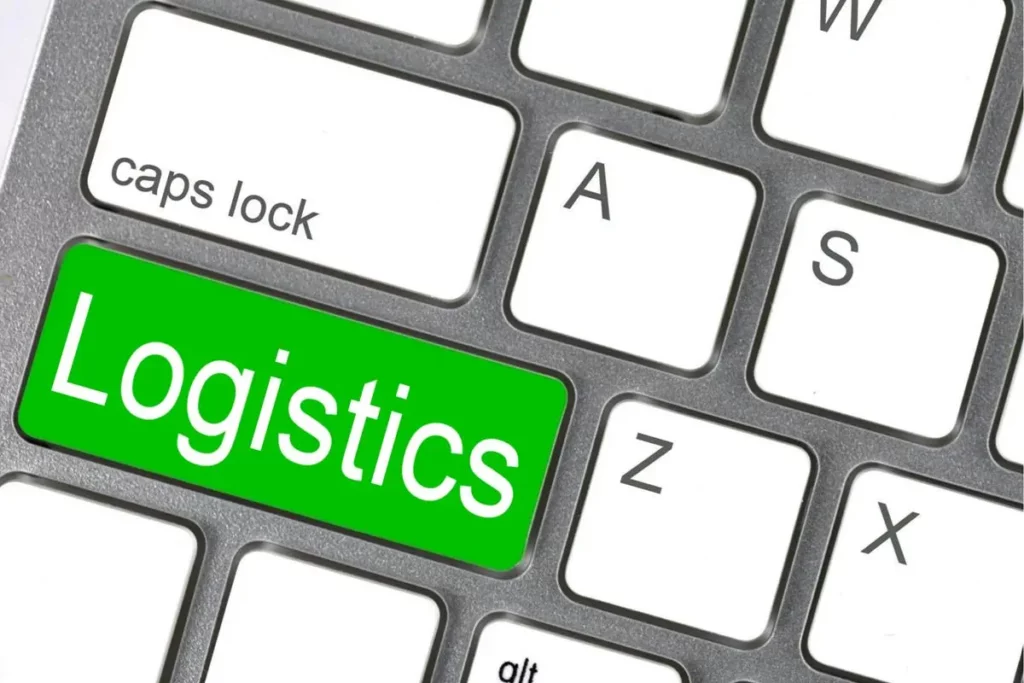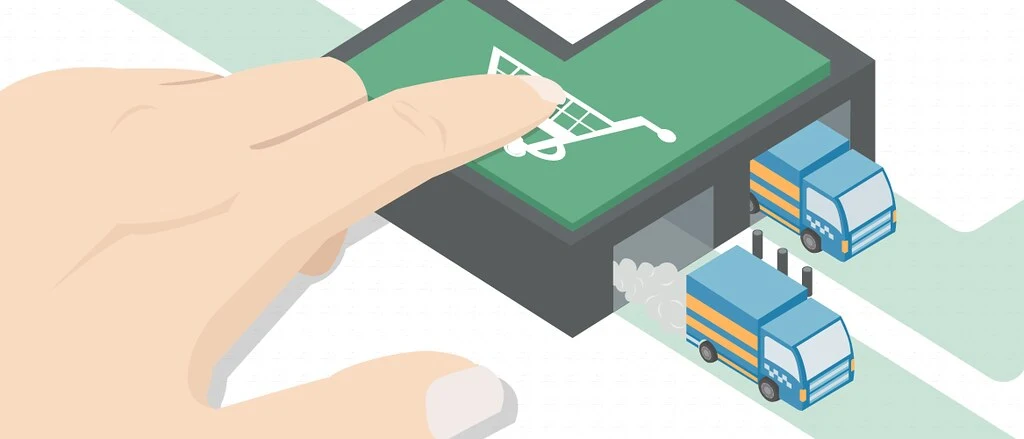Understanding logistics trends is essential for business, and trend research may help organizations of all sizes predict changes, spot areas for innovation, and remain relevant in a market that is becoming more and more competitive.
As the name implies, trend research looks to forecast future events mostly based on consumer behavior, which drives shifts in the needs, wants, and expectations of the market.
It can be equally helpful for developing innovative logistical solutions as it is frequently used in the retail and education industries.
Uber, for instance, saw a trend in the logistics industry in 2017 and introduced Uber Freight, a platform that links truck drivers with businesses that require cargo transportation.
The system eliminates middlemen and streamlines the freight booking process by automatically matching truck drivers with available loads through the use of algorithms.
In addition to giving drivers the advantage of finding loads faster, the procedure streamlines the operations of businesses that have to move cargo.
Uber Freight is a compelling illustration of how identifying industry trends can help a company expand its offerings and foster greater innovation.
Understanding new requirements improves the likelihood of success in an era where the customer-centric approach is becoming more popular and the overall focus on the customer experience is gaining traction across all industries.
The primary logistics trends for 2024 are shown below, along with examples of how some of the industry’s top businesses are already incorporating them into their plans.
Read also: Exploring Top 10 Logistics Trends for 2023 and Beyond
Top logistics trends for 2024
2024 will see a strengthening of the digital transformation in logistics and the introduction of new technologies in the supply chain industry, in line with previous trends.
The foundation of New Logistics has been built by routing, AI, and IoT. It is anticipated that the upcoming year will be dedicated to honing the use of these latest innovations and learning how to strategically integrate them into the operation.
The three trends we shall discuss below show that one of the main goals of businesses going forward will be to enhance the level of technological maturity by achieving more integration and intelligence in the use of data. Check out below:
1. API-based integrations
Forecasts suggest that the number of calls to the open banking Application Programming Interface (API) will expand from 102 billion in 2023 to 580 billion in 2027, reflecting the immediate need for real-time processing and the exponential expansion of API-based solutions.
Strategic API integration allows logistics organizations to get almost real-time data and updates about orders and shipments. These solutions offer an updated and more comprehensive perspective of the digital ecosystem in addition to EDI connectivity.
About 60% of API users report that they crash infrequently, whereas 2% report that they crash on a daily basis.
Through the efficient and real-time processing of API-based interfaces, communication with customers and business partners becomes more agile and productive. This method advances operational agility significantly while also enhancing connection.
The Application Programming Interface (API) is widely used by Amazon, a global leader in cloud computing and e-commerce, and is essential to many aspects of its business operations.
- Amazon Web Services (AWS): makes heavy use of APIs to make it simple for developers to include services like machine learning, storage, and computation in their applications.
- Marketplace: Third-party sellers can interface their inventory, pricing, and order processing systems with the Amazon platform by using APIs provided by Amazon Marketplace.
- Amazon Order Tracking and Logistics: Real-time order tracking is facilitated by APIs, which combine logistics data from Amazon’s internal systems with apps that users use.
2. Blockchain technology
Blockchain is an excellent way to increase security and transparency since it lowers costs and increases operational efficiency by offering an unchangeable, tamper-proof record of transactions.
This endorsement ushers in a new era of trust in corporate transactions while also making daily operations easier. Blockchain technology is more than an evolution; it is a necessary pillar for constructing resilient, dependable, and future-oriented supply chains.
One of the biggest retailers in the world, Walmart, actively uses blockchain technology to improve operational security, efficiency, and transparency:
- Traceability in the supply chain: more accurate visibility into the origin and path of items from production to distribution is made possible by blockchain technology.
- Fresh produce tracking: used to increase fresh produce’s traceability and give customers trustworthy information about the product’s origin and quality.
- Efficiency in reverse logistics: improves reverse logistics efficiency by enabling thorough tracking of returned goods, streamlining procedures, and cutting waste.
- Collaboration with suppliers: by establishing a transparent and secure network for exchanging vital supply chain information, blockchain technology is utilized to improve supplier collaboration.
3. Big data and analytics
Big Data and analytics are taking center stage in a vast ecosystem of logistical data. Logistics firms can make smart judgments instantly by evaluating variables including consumer behavior, stock levels, and delivery schedules.
Big data generates fresh insights that support better decision-making in a variety of contexts by extending the data set for analysis beyond conventional internal data stored in systems like ERP and SCM and utilizing potent statistical techniques.
Actively molding demand is the next level of sophistication, which you may undertake when you have mastered big data forecasting. Major e-commerce companies, for instance, currently employ forecasts, inventory data, and big data analytics to modify the products they suggest to consumers. This effectively increases demand for products that are available in stock.


Top Game-Changing Logistics Trends for 2024: Redefining Global Supply Chains | Image source: Picpedia
To sum up, big data is an important tool that may boost efficiency and competitiveness by streamlining processes and enhancing customer support.
Danone, a leader in the food and beverage industry worldwide, leverages analytics and big data to streamline processes and drive creativity. It is able to map consumption trends and personalize products to satisfy expanding market demands by utilizing these technologies.
Demand forecasting: Danone improves its capacity to modify output in response to market demands by using advanced analytical models to produce precise demand projections.
Product personalization: Product personalization is made easier by the ability to comprehend customer preferences through big data analysis.
How to use trends to boost your logistics
As we have seen, trend research offers several advantages, some of which we can list here:
Anticipation: enables businesses to anticipate developments and quickly adjust to them rather than just responding to them;
Innovation: it is feasible to create new goods, services, and marketing plans based on trends;
Decision: By using research to guide their decisions, businesses can lower risks associated with acquisitions, product launches,, expansions, and other strategic efforts.
The supply chain and logistics industry may gain a great deal from market research by employing surveys to:
- Recognize trends in demand, buying patterns, and seasonal peaks to help businesses maximize transportation routes, inventory control, and operational effectiveness. This lowers costs and enhances the supply chain;
- Businesses can evaluate viability, pinpoint particular market obstacles, and modify their entry strategies before branching out or introducing new services;
- Monitor and prepare for changes in laws and regulations that could impact the logistics industry. This enables businesses to proactively adjust to modifications in the regulatory landscape;
- Analyze the cost-benefit ratio of various supply chain innovations, technological investments, and tactics.
Logistics trends analysis and research methodologies
Ultimately, though, how can you recognize trends and incorporate them into your business? Some approaches and frameworks that can assist you in mapping trends are broken down below.
PESTEL Analysis (Political, Economic, Social, Technological, Environmental and Legal)
The macroenvironmental elements that can have an impact on an organization are analyzed using this methodology. Businesses can find trends and events that could have an impact on their sector by looking at these six categories.
STEEP/STEEPLED Trend Mapping:
This approach, which is akin to PESTEL analysis but adds more dimensions like Ethical and Demographic (STEEP) or Education and Legal Dimensions (STEEPLED), combines enlarged analyses that offer a more thorough understanding of the external environment.
Foresight:
This strategy makes use of prospective methods for several likely scenarios. This could entail developing hypothetical options, examining patterns, and applying various methods, such as surveys.
While each uses a different strategy, they all aim to spot new trends, comprehend how the business environment is changing, and predict what the needs of the consumer will be in the future.
It is essential to emphasize that these approaches are flexible and can be blended to meet the unique requirements of an organization. Adopting a systematic strategy and remaining receptive to ongoing education regarding modifications in the business environment is crucial.
Would you like to learn how to integrate modern technologies and best practices into your supply chain and logistics processes? Please contact us if you have any questions.



